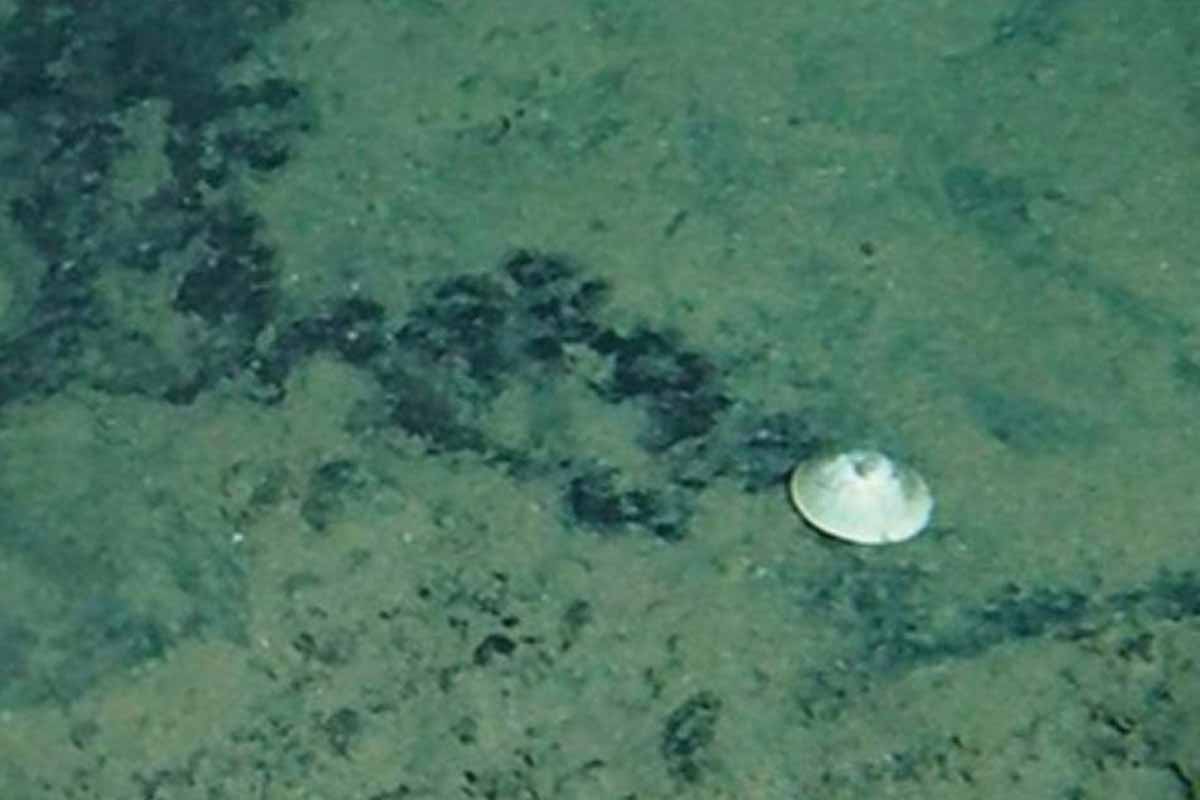Deep-sea mollusk discovery stories usually start loud. This one begins with hush and blue shadow. A sub slid along a volcanic ledge, southeast of Tokyo. Lights brushed a small, glimmering shell at six kilometers down. My pulse would’ve spiked. Yours might too.
Deep-sea mollusk discovery
One limpet stared back from the rock, calm as a moon. Not a florist-window beauty, a survivor. Bathylepeta wadatsumi, newly named, sat on bare stone at 19,430 feet. No sunlight lives there. Only falling crumbs from the world above. Several more shapes flickered past the viewport, ghostlike, then gone. The crew managed one clean collect, the holotype that anchors the name in a museum drawer. A single sample, yet a door swung open. That’s the pull of a deep-sea mollusk discovery. One moment, a blip on a ledge. Next, a new branch on the tree of life.
Life written in a thin blue shell
Meet the shell: thin, translucent, bluish gray, faintly elastic to the touch. Not dainty, just lean. About 1.6 inches long, which is big for life under that much pressure. White streaks radiate from the top like sunrays you’ll never see down there. The animal beneath is reddish brown, anchored by an oval foot. It moved in slow arcs, leaving a curved trail on dusty rock. That track told the story grazing on soft films that settle from above. A strong scraping edge, plus big curved marginal teeth, fit the job. The scene felt almost domestic. A quiet grazer doing its rounds. Another deep-sea mollusk discovery, yes, but also a small life with a routine.
Relatives, records, and pressure
This limpet doesn’t stand alone. Two kin were known already, one from Antarctica, one off Chile. Bathylepeta linseae, the Antarctic cousin, differs in shell shape and the fine parts of its mouth. Wadatsumi is larger, with sturdier teeth along the radula, the ribbon of rasping blades. Those details matter when the pantry is a thin film on stone. Genetics backed the split. The team used COI gene data and broader comparisons to place it within the true limpets. The pattern hints at one ancient move into deep water, followed by several family lines. This find pushes the group’s depth record lower than ever. A deep-sea mollusk discovery can feel small; the new limit isn’t.
Where we look shapes what we see
For decades, many imagined the abyss as endless mud. Turns out, patches of rock break that monotony like islands. Hard surfaces host their own cast of characters. Nets and sleds slide past these ledges and miss them. Submersibles change the game. People can follow a feeding trail, read the rock, and decide fast. That’s how one limpet turned into type material, DNA, a label, a place on a family tree. It also nudges us to scan more cliffs, faults, and escarpments. The map of life expands on the margins. Another deep-sea mollusk discovery might already be waiting two meters to the left.
What one find can teach
Taxonomy isn’t just a pretty shell on a table. It’s anatomy, genes, and the messy joy of pattern. Bathylepeta wadatsumi fits the larger picture and sharpens it. Rocky outcrops at abyssal depths deserve more time, more eyes, more careful hands. Each dive builds a ledger of who lives where, and why. Museum drawers keep us honest. Photos catch textures we forget. DNA fills in the branches we can’t see. I think about that single animal, grazing its arc on a cold ledge. Then I picture the unseen neighbors we’ve missed. That tug you feel right now that mix of wonder and impatience is the engine of every deep-sea mollusk discovery. Keep following it. Another deep-sea mollusk discovery waits behind the next blue hush.
